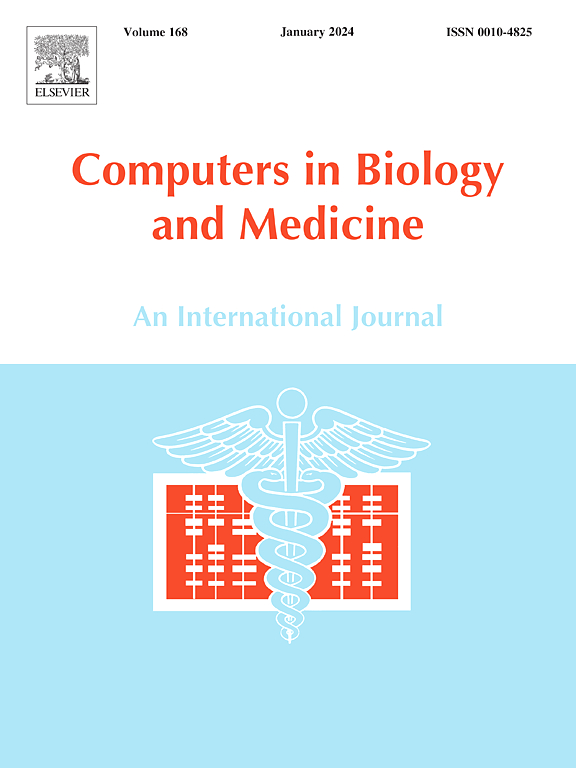Developing a Panel of Shared Susceptibility Genes as Diagnostic Biomarkers for chronic obstructive pulmonary disease and Heart Failure
IF 7
2区 医学
Q1 BIOLOGY
引用次数: 0
Abstract
Aim
Chronic obstructive pulmonary disease (COPD) and heart failure (HF) are closely intertwined comorbidities that present significant clinical challenges due to the poorly understood pathophysiological mechanisms driving their coexistence. In this study, we systematically identified molecular signatures associated with COPD-HF comorbidity through an integrative bioinformatics analysis of multi-omics datasets. Our findings yielded novel diagnostic biomarkers and elucidated the underlying pathophysiological mechanisms.
Methods
The total genes that intersect with the differentially expressed genes (DEGs) of COPD patients and the weighted gene coexpression network (WGCNA) module genes were identified by analyzing DEGs between COPD patients and healthy individuals, as well as two HF datasets. To assess the diagnostic potential, a nomogram based on receiver operating characteristic (ROC) curve analysis was developed. Significantly differentially expressed genes were selected from both COPD and HF groups using the machine learning method known as Least Absolute Shrinkage and Selection Operator (LASSO). Additionally, single sample gene set enrichment analysis (ssGSEA) was employed to investigate the immune systems of HF and COPD patients.
Results
We identified 2002 DEGs between COPD patients and controls, with 36 overlapping WGCNA module genes; furthermore, a total of 201 DEGs were discovered from two HF datasets. Ultimately, the intersection of HF and COPD-related genes revealed four co-susceptibility genes, including SVEP1, MOXD1, SMOC2, and GNB3, were significantly upregulated in both diseases (P < 0.001) and demonstrated high diagnostic accuracy (AUC>0.85). Mechanistically, Machine learning techniques, specifically LASSO analysis, identified five diagnostic genes in COPD and 24 in HF. Patients with chronic COPD and heart failure exhibited significantly elevated expressions of four co-susceptibility genesco-susceptibility genes. Nomograms demonstrated their diagnostic potential in terms of accuracy and performance. Activated CD8 T cells were found to be highly correlated with SVEP1, MOXD1, and SMOC2 in COPD patients, while SVEP1 showed a significant correlation with 26 immune cell types in heart failure patients, as indicated by the ssGSEA analysis. KEGG analysis indicated WNT, VEGF, and SPHINGOLIPID signaling pathways and the co-susceptibility genes were associated in COPD and HF patients.
Conclusion
By utilizing publicly available RNA sequencing data, this study identified a panel of genes that are significantly up-regulated in both COPD and heart failure. Four genes demonstrated high diagnostic value through ROC curve analysis, leading to the development of a nomogram designed to assess each gene's diagnostic potential for patients suffering from COPD and HF.

开发一组共同易感基因作为慢性阻塞性肺疾病和心力衰竭的诊断生物标志物
慢性阻塞性肺疾病(COPD)和心力衰竭(HF)是密切相关的合并症,由于对其共存的病理生理机制知之甚少,因此给临床带来了重大挑战。在这项研究中,我们通过对多组学数据集的综合生物信息学分析,系统地确定了与COPD-HF合并症相关的分子特征。我们的发现产生了新的诊断生物标志物,并阐明了潜在的病理生理机制。方法通过分析COPD患者与健康个体之间的差异表达基因(deg)以及两个HF数据集,鉴定与COPD患者差异表达基因(deg)和加权基因共表达网络(WGCNA)模块基因相交的总基因。为了评估诊断潜力,建立了基于受试者工作特征(ROC)曲线分析的nomogram。使用称为最小绝对收缩和选择算子(LASSO)的机器学习方法从COPD和HF组中选择显著差异表达的基因。此外,采用单样本基因集富集分析(ssGSEA)研究HF和COPD患者的免疫系统。结果在COPD患者和对照组之间鉴定出了2002个deg,其中36个WGCNA模块基因重叠;此外,从两个HF数据集中共发现了201个deg。最终,HF和copd相关基因的交叉显示,4个共易感基因,包括SVEP1、MOXD1、SMOC2和GNB3,在两种疾病中均显著上调(P <;0.001),并显示出较高的诊断准确性(AUC>0.85)。机械上,机器学习技术,特别是LASSO分析,确定了COPD的5个诊断基因和HF的24个诊断基因。慢性COPD合并心力衰竭患者4种共易感基因的表达显著升高。图显示了其诊断的准确性和性能方面的潜力。ssGSEA分析发现,活化的CD8 T细胞与COPD患者的SVEP1、MOXD1、SMOC2高度相关,而SVEP1与心力衰竭患者的26种免疫细胞类型显著相关。KEGG分析显示WNT、VEGF和SPHINGOLIPID信号通路和共易感基因在COPD和HF患者中存在关联。通过利用公开可用的RNA测序数据,本研究确定了一组在COPD和心力衰竭中显著上调的基因。通过ROC曲线分析,4个基因显示出较高的诊断价值,从而开发了一个nomogram,旨在评估每个基因对COPD和HF患者的诊断潜力。
本文章由计算机程序翻译,如有差异,请以英文原文为准。
求助全文
约1分钟内获得全文
求助全文
来源期刊

Computers in biology and medicine
工程技术-工程:生物医学
CiteScore
11.70
自引率
10.40%
发文量
1086
审稿时长
74 days
期刊介绍:
Computers in Biology and Medicine is an international forum for sharing groundbreaking advancements in the use of computers in bioscience and medicine. This journal serves as a medium for communicating essential research, instruction, ideas, and information regarding the rapidly evolving field of computer applications in these domains. By encouraging the exchange of knowledge, we aim to facilitate progress and innovation in the utilization of computers in biology and medicine.
 求助内容:
求助内容: 应助结果提醒方式:
应助结果提醒方式:


